Introduction
Whether you’re inspired by legendary figures like Robin Hood, or simply looking for a hobby that challenges your skills, archery awaits you. It’s more than just a sport; it’s an art form that combines focus, precision, and creativity. Getting started with bow and arrows can seem overwhelming to a beginner, but fear not. This guide will take you through everything you need to know about it so that your transition will be smooth.
By the end of this post, you will feel equipped and excited to string your bow and take aim! With different types of bows, equipment, safety tips, basic techniques, and resources, you will be ready to start your archery adventure.
Why Bows And Arrows Are Great For Beginners
The archery sport promotes physical fitness, mental concentration, and discipline. If you’re looking for an engaging way to spend your time outdoors while also cultivating a sense of community, archery is the perfect option.
Moreover, archery is accessible to beginners. There are many resources available to you—from local clubs to online tutorials—so you can learn at your own pace. Archery is a rewarding experience that cultivates patience and focus, offering a therapeutic escape from daily stress.
The Different Types Of Bows
Recurve Bows
Recurve bows are perhaps the most recognizable type of bow. They have limbs that curve away from the archer when unstrung. This unique design allows for enhanced power and speed when shooting, which makes them ideal for target archery.
Pros
- Lightweight and easy to handle
- Affordable for beginners
- Ideal for target shooting and field archery
Cons
- Requires more skill to shoot accurately
- Limited power compared to compound bows
Compound Bows
Compound bows incorporate a system of pulleys and cables, offering a more complex design that allows for enhanced accuracy and speed.
Pros
- Excellent for hunting due to their power
- Adjustable draw weight for personalized use
- Easy to hold at full draw, reducing fatigue
Cons
- Heavier and more expensive than recurve bows
- Requires more maintenance due to mechanical components
Longbows
The longbow is a traditional bow that has stood the test of time. Its simple design, made from a single piece of wood, makes it an attractive choice for many archers.
Pros
- Offers a classic archery experience
- Can be customized with various materials
- Generally cheaper than compound bows
Cons
- Requires significant upper body strength
- Less forgiving of accuracy for beginners
Crossbows
Crossbows are distinct from traditional bows. With a horizontal bow mounted on a stock, they are easier to aim and shoot, making them popular with beginners.
Pros
- Easy to use, even for those with limited strength
- Can be aimed like a firearm, simplifying the shooting process
- Great for hunting and target shooting
Cons
- Heavier and bulkier than other types of bows
- Limited draw length and weight options
How To Choose The Right Bow
What Is Draw Weight And Draw Length?
Draw weight and draw length both play an important role in selecting the best bow. Draw weight relates to how much force is required to pull back the bowstring, while draw length refers to how far the bowstring is from the grip.
When starting out, many beginners prefer a bow with a lower draw weight (between 20-30 pounds), as this allows them to handle and shoot the bow more easily. Measuring your draw length accurately will help make sure your bow fits comfortably. A bow that is too short or too long may affect your accuracy and overall experience.
Quality Of Materials And Construction
Choosing the right material and build quality for your bow can make a big difference in its performance. Wooden bows are classic, while fiberglass and carbon composite bows are lightweight and durable. Always rely on reputable brands to ensure you’re getting a quality product.
Personal Examples And Anecdotes
In my first archery experience, I chose a recurve bow with a draw weight of 25 pounds. Through this choice, I was able to increase my strength while maintaining a manageable learning curve. After joining a local archery club, I had the chance to test various bows, ultimately moving to a compound bow as my skills improved.
A Beginner’s Essential Gear
Arrows: Types And Selection Tips
As important as choosing the right bow is choosing the right arrows. Arrows come in a variety of materials, such as carbon, aluminum, and wood. Carbon arrows are lightweight and durable. Beginners should consider carbon arrows for their durability.
It is recommended that you select arrows that match the specifications of your bow, particularly the draw weight and length. The rule of thumb is to choose arrows that are slightly longer than your draw length in order to achieve the best flight stability.
Quiver: Importance And Types
Quivers are essential for storing and carrying arrows, and they can come in a variety of styles, including hip quivers, back quivers, and bow-mounted quivers. Back quivers, for instance, offer easy access while maintaining a low profile.
The type of archery you wish to pursue and your personal preferences will influence your choosing of a quiver.
Arm Guard And Finger Tab: Safety And Comfort
A bowstring guard protects your forearm from the snap of the bowstring, while a finger tab helps you draw the string smoothly without discomfort. Accessories are important for safe and enjoyable archery.
As an archery beginner, I learned the hard way about the need to invest in good protective gear after getting painful string burns. Investing in quality gear made all the difference.
Additional Gear: Bow Stand, Bow Stringer, Etc.
You will also need a bow stand to keep your bow safe when it’s not in use, as well as a bow stringer to assist you in stringing and unstringing it safely. You may also wish to explore additional tools to enhance your performance, such as release aids, stabilizers, and bow sights.
A Few Safety Tips
The Fundamental Rules Of Safety
A successful archer must follow fundamental safety rules, such as treating their bow as if it were loaded, never aiming at anything that they do not intend to shoot, and always being aware of their surroundings.
Ensure that fellow archers are aware when shooting is underway by developing a clear communication protocol.
Set Up A Safe Practice Area
Practicing archery safely requires creating a safe practice area, such as foam or hay bale targets that can absorb arrow impacts, and a clear backdrop behind the target. Practice in an open space away from people and animals.
Equipment Storage And Maintenance
The best way to extend the life of your bow is to store it properly. Maintain your bow by keeping it away from extreme temperatures and moisture, and inspect all of the components for wear and tear on a regular basis. Regularly clean your bowstring and check for frayed areas to maintain safety and performance.
Basic Techniques
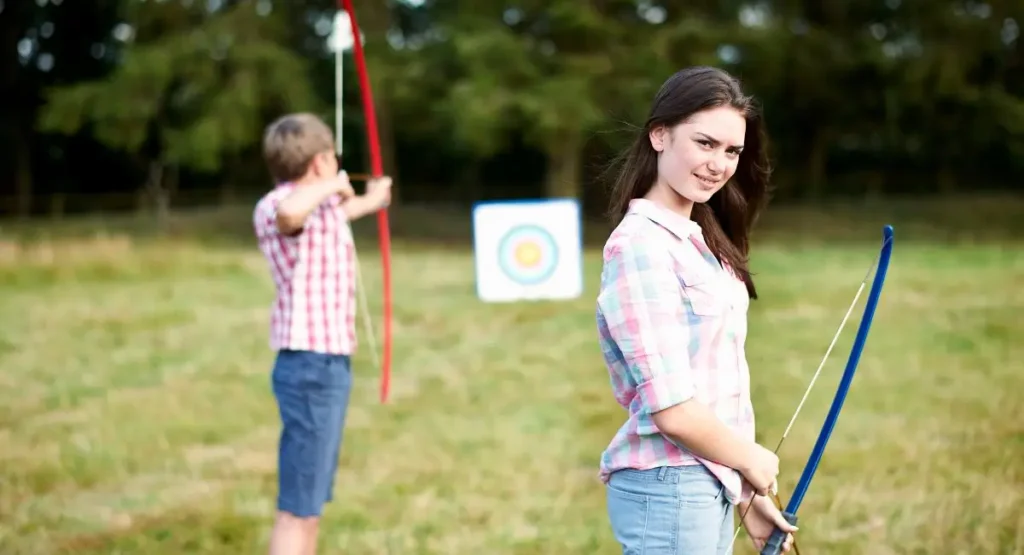
Stance: How To Position Your Body
Your stance lays the foundation for a successful shot. Stand with your feet shoulder-width apart, perpendicular to your target. Distribute your weight evenly and keep your knees bent for stability.
Nocking The Arrow
Nocking your arrow correctly is vital for accuracy. Place the arrow on the arrow rest and nock it onto the string. Ensure the odd fletching (the feather of a different colour) faces away from the bow. This position guarantees proper flight when released.
Aiming And Release: Techniques For Accuracy
Aim by aligning your dominant eye with the arrow and target. Focus on the target rather than the pin or sight. Release the arrow smoothly by relaxing your fingers on the string, maintaining a steady posture throughout.
Follow Through: The Importance And Tips
Follow-through is critical to accuracy. After releasing the arrow, keep your bow arm extended and your focus on the target until the arrow hits. This technique helps maintain consistency and improves your aim.
Tips For Practicing
Establishing Practice Targets
Setting targets can be fun and rewarding. Choose a suitable target type, whether it’s a traditional bullseye or a 3D animal target. Ensure that the distance aligns with your comfort level and skill.
Routines For Daily Practice
Practice is essential for improvement. Establish a routine that includes warm-up exercises, technical drills, and actual shooting time. Even dedicating 30 minutes each day can lead to significant progress.
Identifying And Correcting Mistakes
Mistakes are part of learning. After practice sessions, analyze your shots—what worked well and what didn’t? Use tools like video analysis or seek advice from experienced archers to identify areas for improvement.
Become A Member Of An Archery Club
Benefits Of Club Membership
Joining an archery club offers numerous benefits. You gain access to experienced mentors, share equipment, and participate in organized events. Being part of a community fosters motivation and enthusiasm.
How To Find And Join Local Clubs
Research local clubs through online directories or social media. Attend introductory sessions or open houses to meet members and see if the environment aligns with your goals.
Community And Support In Archery
Archery community i-e Archery Talk, is welcoming and supportive. Engaging with fellow archers provides opportunities for camaraderie, skill-sharing, and lasting friendships.
Background And Cultural Context
Brief Archery History
Archery has a rich history dating back thousands of years, originally developed for hunting and warfare. It evolved into a competitive sport and recreational activity, resonating with many cultures worldwide.
Bows And Their Cultural Significance
Different cultures favor specific bows. For example, the Mongolian horse bow is known for its speed and maneuverability, while the English longbow played a critical role in historical battles.
Beginners’ Tips For Advanced Techniques
Developing Intermediate Techniques
Once you’ve mastered the basics, consider refining your technique by exploring advanced tactics such as varying your anchor point. You can also experiment with different sighting methods.
How To Upgrade Your Gear
Investing in quality gear enhances your experience. Look for improvements in your bow, arrows, and accessories as you improve.
Achieving Personal Goals
Set clear, achievable goals, whether it’s mastering the latest technique or participating in competitions. This mindset fosters growth and keeps you motivated.
Frequently Asked Questions (FAQs)
What Bow And Arrow Is Best For Beginners?
Recurve bows are often recommended for beginners due to their affordability and ease of use. They allow fundamental learning without overwhelming complexity.
Can You Teach Yourself To Shoot A Bow And Arrow?
Yes, many beginners successfully learn through online resources and videos. However, joining a club or seeking mentorship can accelerate your learning curve.
What Size Bow Should A Beginner Use?
The bow size depends on your draw length and strength. A qualified instructor can help determine the appropriate size for you.
How To Shoot A Bow And Arrow For Beginners?
Proper technique involves stance, nocking the arrow, aiming, and follow-through. Regular practice and guidance will refine your skills.
How Do I Choose My First Bow?
Consider your goals, budget, and comfort level. Trying different bows in local shops or clubs can help make an informed decision.
How To Choose A Bow Height?
Bow height is determined by your draw length. A bow that feels comfortable and effortless while drawing is essential.
Conclusion
You are now better prepared to get started in archery now that you have read this beginner’s guide to bows and arrows. The key to success lies in practice, patience, and connecting with a community near you. You can start your archery adventure today, and you can find clubs or mentors who can help you.
You’re all set to string your bow and take aim, so join the archery community and start taking aim right away!
Recommended Article
- 10 Must Know Archery Terms For Beginners
- 5 Basic Steps To Tune A Bow With Advanced Techniques
- 5 Best Tips for Traditional Archery: Art of Precision and Accuracy
- 6 Mind-Blowing Best Compound Bow For Women
- 7 Best Compound Bow for Beginners for Starting Your Archery Journey
- 7 Essential Parts of a Bow: A Comprehensive Guide for Archery Enthusiasts



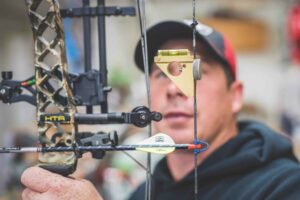
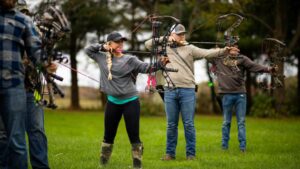
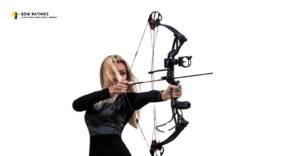
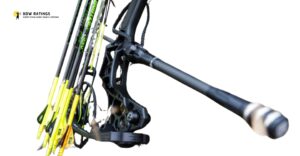
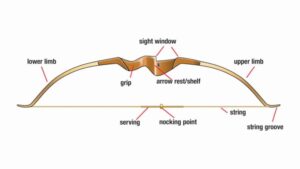
14 thoughts on “Discover The Joy Of Archery With A Bow And Arrow For Beginners”
Comments are closed.